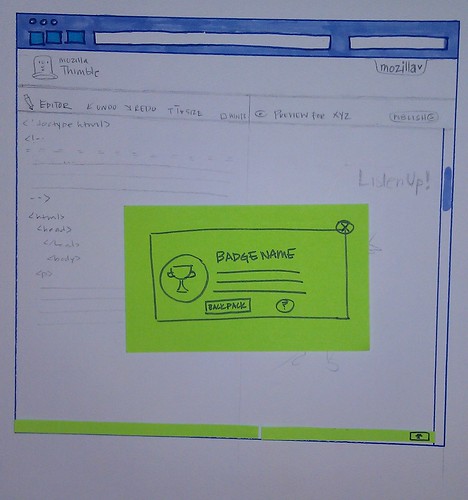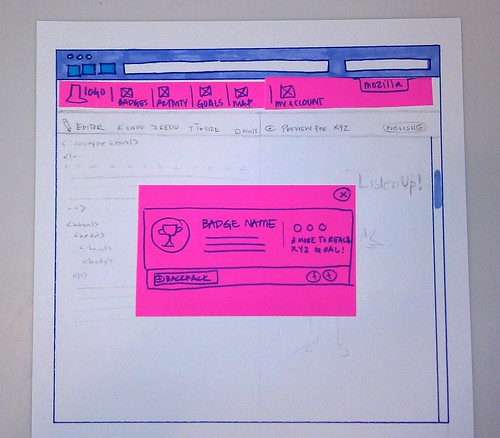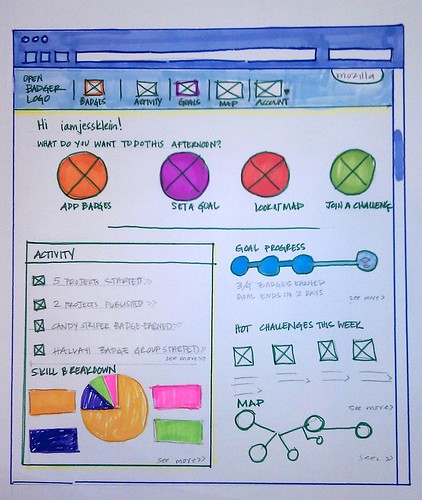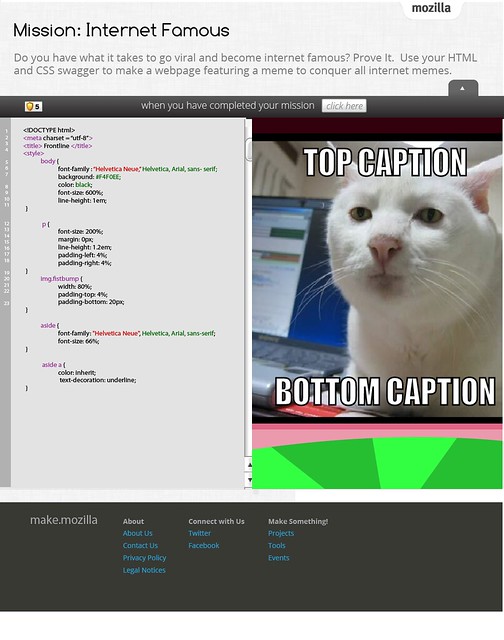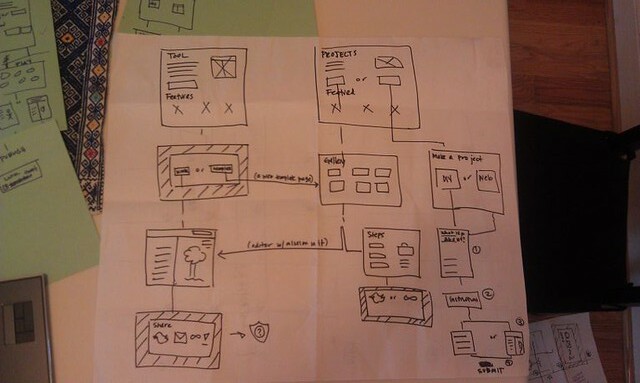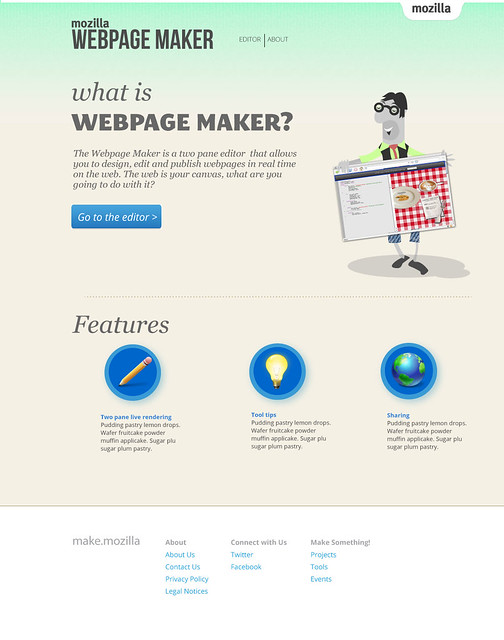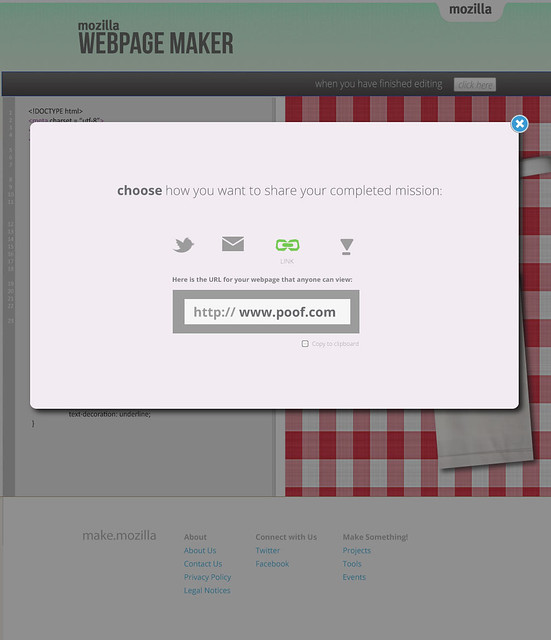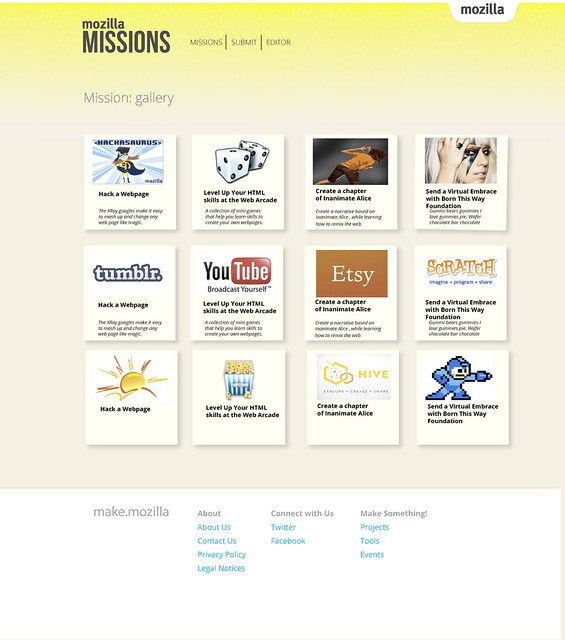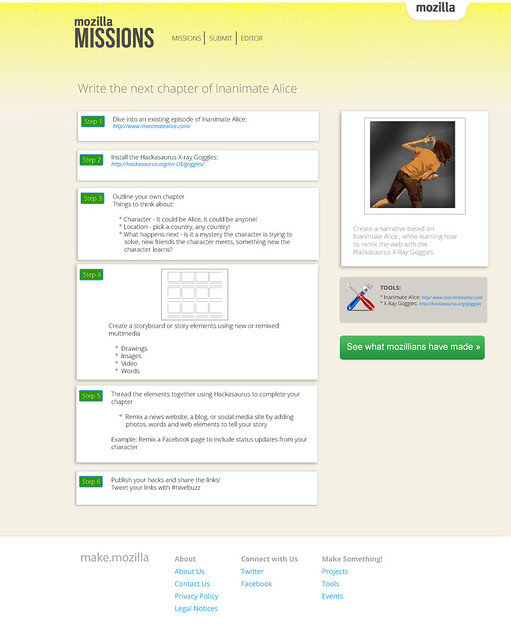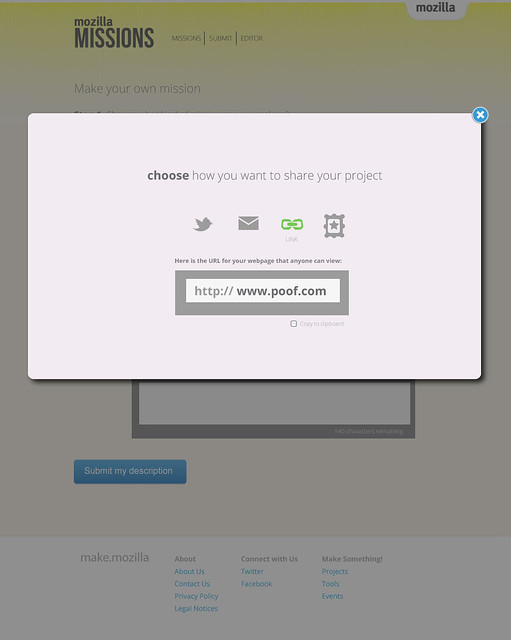I was reading
this article this morning in the NY Times by Louis Uchitelle about the American workforce and how we are losing our value of craftsmanship,
and it got me thinking about the word "craft."
Photo by Michael Falco of the NYTimes
We are at a stage where we are
building up the contents of our "toolbox" at Mozilla, figuring out
ways to sharpen those tools. We have Popcorn, X-Ray Goggles and Thimble- as well as learning projects that can accompany those tools within the context of the tool or in the form of a D.I.Y. recipe. I am wondering, however, in the long run- how are we going to
turn web-hobbyists into web-craftsmen (women, girls and boys)? We are
designing badge systems and trajectories, for our learning content at Mozilla, which will reveal to our users pathways for further exploration, but in project based learning, I wonder what that extra secret ingredient is that will empower someone to go above and beyond and refine their work to the point that it is a craft.
Implicit in the
word craft is some understanding of design, whether that be design of
the system, the tool or the concept. In fact, the American Craft Museum
(my former employer) has now changed their name to the
Museum of Arts & Design. To some degree, the name change was because the term "craft" has lost its relevance in our society- people think of old women crochetting doilies when they hear craft. However, more and more I hear people reclaiming the word and using it as a brand advantage- something that was made by hand. The
Renegade Craft Fair, encourage local artisans to connect with eachother and show (and sell) their wares. Two key takeaways that I have from being a participant in their events is 1) a emphasis on hand- made design and 2) a celebration of community. I believe, these might be the two ingredients required for craftsmenship.
Do not call Atul Varma a codemonkey!
Design is a concept that extends far beyond "coding" when we talk about it in the context of webmaking. When someone creates a webpage, for example, a lot more goes into it than just implementing it- there is the
concepting phase- where you brainstorm and make decisions on what and why of your page, the
asset creation stage and finally the
implementation stage. It's the big picture. The developers who I work with at Mozilla understand this. In fact,
Atul, my thought partner at Mozilla, and co-developer of Hackasaurus hates it when people refer to him as a "code monkey" (someone who only inputs code)- and while I would only ever say that expression in jest, the reason he gets so offended is that he is a craftsman. He researches, he tinkers, he looks for a community and ultimately, shares his work within that community. In short, he designs, develops and contributes to a community.
Learn about how much character (get it?) is inside your browser!
In the
article, the author mentions how people know how to use their computers
but they don't know how to build them- which got me starting to think
about what the appropriate analogy is for the work that we do- because
yes I could force teens to take apart their computers - but I think
that doesn't resonate in the same way that it did for us in the 80s/90s.
I think that the canvas for today is not the computer, but the browser-
and I feel that deconstructing that browser will help learners understand what is possible- and why it is important to refine your craft to the point that your work is not just digestible data, but beautiful content that is accessible. Atul and I started to dabble with this idea using the
Navigator badge concept- but I would love to push that further, and not think about the assessment, but the lessons here.
Hive NYC has developed a community of practice amongst professionals and learners
The community piece is a bit tricky because there are so many ways for us to engage communities. One way, is to build communities of practice with professionals and youth at like minded organizations- which is what we are doing with Hive NYC at Mozilla. Another way would be to meet youth where they already are, which is kind of the beauty of modular concepts like
Open Badges- because it wouldn't matter what circle a learner is based in, because they would be able to show their skill through an understood social currency that is backed up by a portfolio of work. Then again, there are other ways, like imagine mixing the making piece within the context of a community of online practice- like hacking facebook to be the best facebook within facebook- with your facebook peers (oh yeah, that sounded like Inception!)
I often say that the web is a handcrafted community and medium- one that was created by individual people who work to make it
reflect of our own local interests. If we are to elevate the level of innovation and representation within the web, we need to develop a community of web- craftsmen. That means providing tangible learning tools and projects, trajectories that implicitly incorporate design thinking and integrating with communities of practice.









